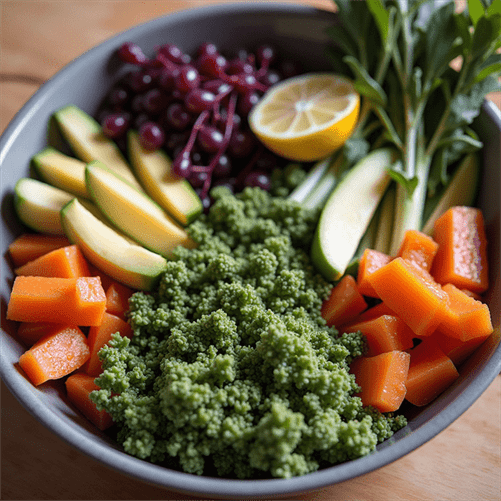Ben Azadi Wants To Eliminate Stubborn Visceral Fat

Ben Azadi, is a seasoned functional health practitioner with over 16 years of experience. Ben has established himself as a leading voice in metabolic health and wellness. He teaches his students how to eliminate stubborn visceral fat. As the author of four best-selling books, including his latest work “Metabolic Freedom,” Azadi shares his proven protocol for sustainable fat loss, A1C reduction, hormone balancing, and metabolic optimization.
His award-winning Metabolic Freedom Podcast and comprehensive YouTube channel serve as invaluable resources for those interested in intermittent fasting, ketogenic nutrition, biohacking, and longevity strategies.
Driven by an ambitious mission to reverse type-2 diabetes in one million people within the next decade, Azadi combines cutting-edge nutritional science with practical implementation strategies to help individuals reclaim their health and transform their relationship with food.

Visceral fat is more than just an aesthetic concern; it’s the dangerous fat that surrounds your vital organs—your liver, heart, pancreas, and more. It increases the risk of inflammation, metabolic diseases, obesity, PCOS, high blood pressure, and many other health complications.
The good news? You can reduce this harmful fat with a structured, easy-to-follow 30-day protocol. Unlike typical diet plans, this protocol does not require calorie counting, food weighing, or relying on willpower. Instead, it focuses on making simple but highly effective changes to your daily routine.
Ben’s guide has helped thousands of men and women worldwide, and now, it’s your turn to take control of your health. Let’s dive into the four-week transformation plan!
Week 1: Laying the Foundation
Each week consists of five actionable steps that will set you on the path to sustainable fat loss.
Step 1: Reduce Carbohydrates to 100g or Less Per Day
Carbohydrates, including bread, pasta, oatmeal, cereal, and whole grains, turn into sugar in your body. This triggers insulin, the hormone responsible for storing fat, especially visceral fat. By lowering your daily carb intake to 100g or less, you reduce insulin spikes and promote fat burning.
Use a free app like Chronometer to track your carbohydrate intake.
Step 2: Remove Inflammatory Vegetable Oils
Certain oils increase inflammation and prevent fat-burning hormones from working effectively. Reduce your intake of these oils:
- Canola oil
- Corn oil
- Cottonseed oil
- Soybean oil
- Safflower oil
- Sunflower oil
- Rice bran oil
- Grape seed oil
Step 3: Follow the 222 Rule for Healthy Fats
Consume these metabolism-boosting fats daily:
- 2 tablespoons of coconut oil or MCT oil
- 2 tablespoons of butter or ghee
- 2 tablespoons of avocado oil or olive oil
These healthy fats support hormone production, reduce inflammation, and promote fat loss.
Step 4: Walk 7,000 Steps Per Day
Walking helps regulate insulin and supports fat loss. Track your steps with a Fitbit, smartwatch, or a simple pedometer.
Step 5: Stick to Three Meals Per Day (No Snacking!)
Eating three balanced meals—breakfast, lunch, and dinner—prevents frequent insulin spikes. A good schedule could be:
- 8:00 AM – Breakfast
- 12:00 PM – Lunch
- 6:00 PM – Dinner

Week 2: Enhancing Fat Loss
Step 1: Lower Carbohydrates to 75g Per Day
Reducing carbs further enhances fat burning and insulin sensitivity.
Step 2: Walk After Meals
A 20-minute walk after each meal significantly reduces insulin spikes and promotes fat burning. If you can’t walk after every meal, prioritize your largest meal.
Step 3: Move Dinner 2 Hours Earlier
If you previously ate dinner at 8:00 PM, aim for 6:00 PM instead. This gives your body more time to digest, improving sleep quality and metabolic function.
Step 4: Consume 30g of Protein Per Meal
Protein is thermogenic, meaning it helps your body burn calories. Ideal protein sources include:
- Eggs
- Steak
- Poultry
- Seafood
- Organic, fermented soy products (for vegetarians)
Step 5: Drink Apple Cider Vinegar Before Meals
Mix 8 oz of water with 1 tablespoon of apple cider vinegar and a pinch of sea salt before each meal. This helps digestion, lowers blood sugar, and supports fat loss.
Week 3: Maximizing Results
Step 1: Reduce Carbohydrates to 50g Per Day
This further optimizes insulin sensitivity and accelerates fat burning.
Step 2: Increase Steps to 10,000 Per Day
Walking more intensifies fat-burning efforts. Continue the 20-minute post-meal walks.
Step 3: Add a 30-Minute Morning Walk (Before Breakfast)
Walking on an empty stomach burns more fat, as your glycogen stores are lower in the morning.
Step 4: Maintain 30g of Protein Per Meal
Continue prioritizing protein intake to boost metabolism and satiety.
Step 5: Shift Your Biggest Meal to Breakfast
Since your body processes food better in the morning, have your largest meal at breakfast and smallest meal at dinner.
Week 4: The Final Push
Step 1: Maintain 50g of Carbohydrates Per Day
Stay consistent with low-carb intake to sustain fat loss.
Step 2: Increase Morning Walk Intensity
Consider brisk walking, light jogging, or sprint intervals for enhanced fat loss. A cup of green tea or black coffee before walking may further boost results.
Step 3: Practice Time-Restricted Eating (2 Meals Per Day)
Instead of three meals, eat two meals per day with at least 30g of protein per meal. An ideal schedule:
- 8:00 AM & 12:00 PM (preferred) or
- 12:00 PM & 6:00 PM
Step 4: Take ‘Vitamin G’ – The Gratitude Supplement
Gratitude reduces stress, lowers cortisol, and promotes overall well-being. Start each day by writing down something you’re grateful for.
Step 5: Increase Steps to 12,000 Per Day
Boost daily movement and continue 20-minute post-meal walks.
FAQs About the 30-Day Protocol
1. Can I Exercise During This Plan?
Yes! Strength training and muscle-building exercises improve insulin sensitivity and fat loss. Recommended workouts include:
- Squats
- Push-ups
- Bench press
- Burpees
- Lunges
- Sprint intervals (20 seconds sprint, 2 minutes rest, repeat 4 times)
2. How Important Is Sleep?
Deep sleep (delta sleep) is crucial for fat burning. Moving dinner earlier will improve sleep quality and metabolic function.
3. What Happens After the 30 Days?
Continue focusing on metabolic health! For deeper learning, check out my free metabolism course when you order my new book, Metabolic Freedom.

The Key to Eliminating Stubborn Visceral Fat
Eliminating stubborn visceral fat is essential for overall health, as this deep abdominal fat is linked to serious conditions like heart disease and insulin resistance. However, many people struggle with visceral fat loss, often because they follow ineffective methods. Fortunately, the right combination of diet and exercise can make a significant difference. One of the most effective strategies is intermittent fasting for fat loss, which helps regulate insulin levels and promote fat-burning. Additionally, pairing this method with a low-carb diet can further enhance results by reducing glucose spikes and shifting the body into fat-burning mode.
The Power of Protein and Apple Cider Vinegar
A high-protein meal plan is another crucial factor in shedding stubborn visceral fat. Not only does protein increase satiety, but it also supports muscle growth and has a high thermic effect, meaning the body burns more calories digesting it. For best results, incorporating lean meats, eggs, and legumes into daily meals is highly recommended. Furthermore, adding apple cider vinegar for weight loss may provide additional benefits by supporting digestion and improving insulin sensitivity. When combined with fat-burning workouts, such as resistance training and high-intensity interval training (HIIT), this approach can lead to faster and more noticeable changes in body composition.
How Stress Impacts Belly Fat
Understanding how to reduce belly fat requires a holistic approach that includes stress management. Unfortunately, chronic stress raises cortisol levels, which promotes fat storage in the abdominal area. To combat this, engaging in relaxation techniques, meditation, or even light yoga can help lower stress levels. Moreover, studies have shown a strong link between stress and belly fat, making it crucial to manage mental well-being alongside diet and exercise. In addition to stress reduction, incorporating the best exercises for fat loss, such as strength training and cardiovascular activities, ensures that the body remains in an optimal fat-burning state.
A Sustainable Diet for Long-Term Fat Loss

Following the best diet for visceral fat means focusing on whole, nutrient-dense foods while avoiding processed sugars and unhealthy fats. For instance, foods rich in fiber, such as vegetables, nuts, and seeds, help improve digestion and regulate appetite. Furthermore, combining a clean diet with a structured exercise regimen ensures that stubborn fat stores are consistently broken down. To maximize success, adopting sustainable habits like visceral fat loss techniques, such as carb cycling and intermittent fasting, can lead to long-term results. Ultimately, by implementing these strategies consistently, individuals can achieve a leaner, healthier physique while significantly improving their overall well-being.
Visit MetabolicFreedomBook.com to get access.
This protocol has transformed countless lives, and now it’s your turn. Follow the steps, stay consistent, and experience the benefits of reduced visceral fat and better health. If you found this guide helpful, share it with someone who needs it!